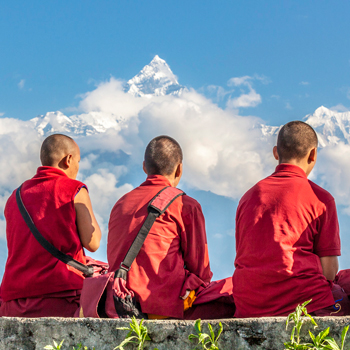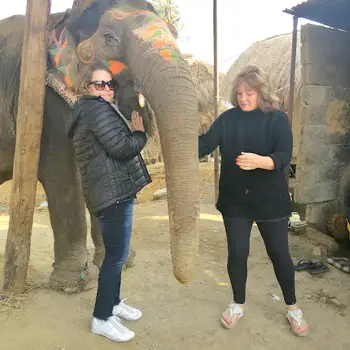Bhaktapur Durbar Square: Don’t miss to visit
- Wednesday December 14, 2022
- 0
Bhaktapur Durbar Square, a filming location of the famous Hollywood movie Little Buddha, is known for its numerous architectural monuments. Listed as a World Heritage Site in 1979 by UNESCO, Bhaktapur Durbar Square seems to be painted reddish brown. The most affected site during the 2015 earthquake, Bhaktapur, has hoisted itself as the most beautiful city of Kathmandu Valley. The name Bhaktapur itself means a city of fairy tales or a city of masters.
Many of the monuments in Bhaktapur Durbar Square were completed in the 15th and 17th centuries when they became the residence of the royal dynasty. Surrounded by majestic architecture, it convincingly demonstrates the high skill of Newari artisans and artists over several centuries.
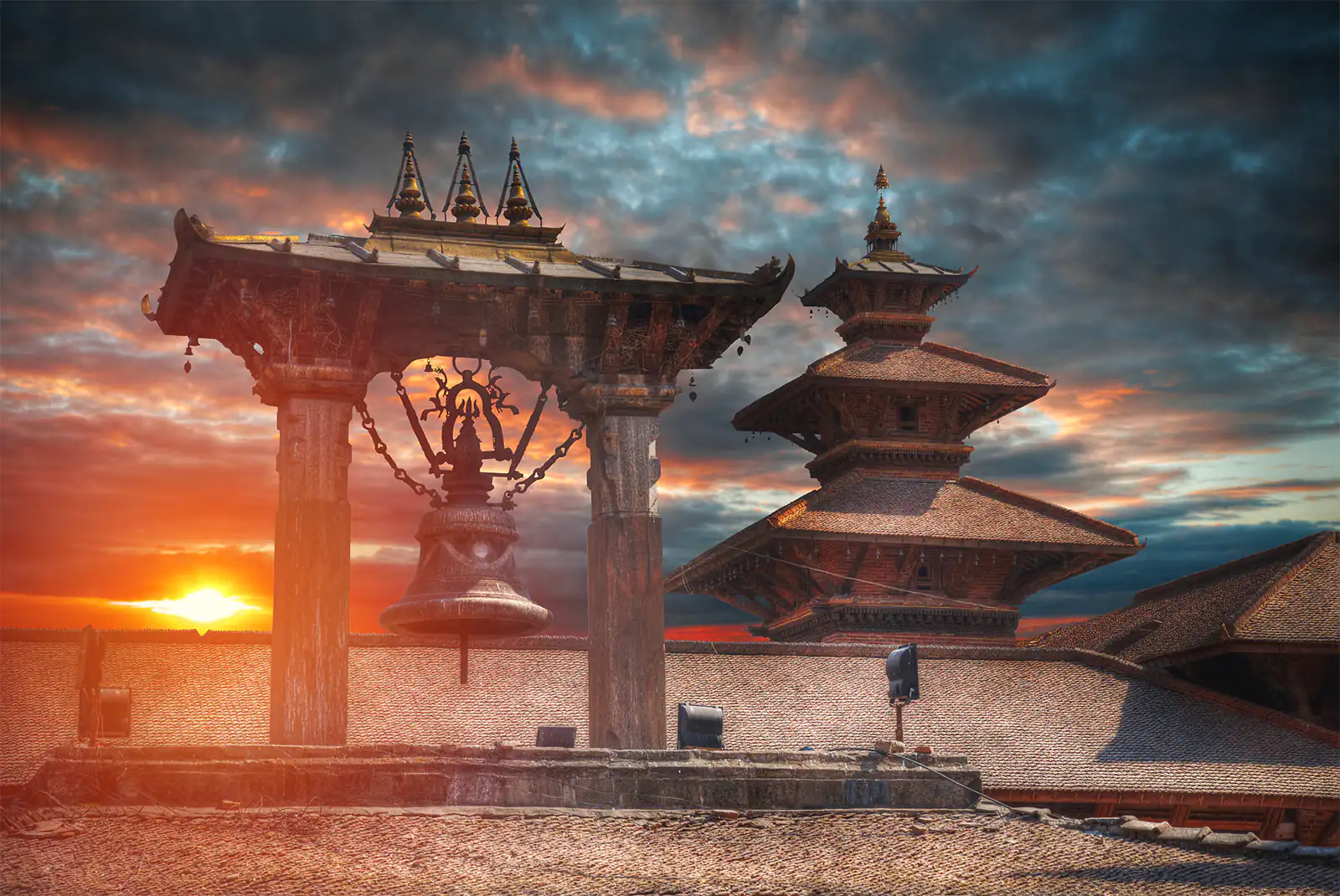
Why go to Bhaktapur Durbar Square?
Unlike Patan and Kathmandu Durbar Square, Bhaktapur Durbar Square is less crowded with tourists and residents from the cities of Kathmandu Valley. Traffic is prohibited in the area, so hiking is the only way to get to know the magnetism of the quiet streets and squares of the city. The difficulty of being unable to use a taxi or rickshaw is offset by clean air.
The Bhaktapur Durbar Square is the cultural capital of Nepal, a city where you can immerse yourself in the atmosphere of ancient Nepal, its customs, culture, and religion. You can leisurely walk around the crafted streets and enjoy the temples, monuments, and street craftsmen who create their masterpieces right on the street and watch the life of the local population.
Nevertheless, things are more tranquil here than in Kathmandu. Especially in the early morning hours, there are still few people to be found, and you can immerse yourself in the almost spiritual atmosphere of the square. Take your time to admire the ornate facades of the buildings in the square and climb the steps to your choice of temple.
Make sure you have enough time because there is much to discover in the square of the old royal palace in the city’s center. The traditional buildings, temples, and pagodas inspire architecture fans and photographers alike, and those who want to gain even more insight into the city’s history can visit one of the local museums.
How to get to Bhaktapur Durbar Square?
Bhaktapur Durbar Square is a mere 15 km from the country’s capital. You can reach this beautiful city in just forty-five minutes to one hour, depending on the traffic, by a regular bus or by taxi.
You can catch a bus from the Kathmandu bus stop and return the same way by taking a bus from the Bhaktapur bus stand. If you like to travel more serenely, you can always take a taxi. The fare is about NPR 1000, depending on your negotiation skills. You can also charter a taxi for a whole day at NPR 3000 to 4000, including the round trip fee and waiting time of 2 to 3 hours.
A massive lion gate will welcome you to Durbar Square.
Entrance Fee to Bhaktapur Durbar Square
Foreign nationals, including people from China and SAARC countries, must pay the entrance fee to visit Bhaktapur Durbar Square. The entrance fee to the historical part of the city is NPR 1500 and NPR 500 for Chinese and SAARC citizens. Children below ten and the group leader (a group containing 11 to 20 members) get free entry to the square.
Weather in Bhaktapur
The climate of Bhaktapur is temperate, with an average temperature of 18.4 °C. The warmest months are June and July, with an average daytime temperature of 25 to 27 degrees. The temperature here never drops below 0 °C, while the maximum is 30 °C. There is a lot of precipitation from mid-July to the end of September.
What to buy in Bhaktapur Durbar Square?
Bhaktapur Durbar Square is the perfect destination for buying jewelry made from silver with coral and turquoise. You will find simple pendants and impressive designs with stones of considerable size. Some shops sell typical Nepali objects such as hats, bags, boxes, lighters, and other daily utensils, old and made with these stones so characteristic of the country.
As a memento of the trip, you can choose something among the many carved wooden crafts that are presented for every taste. They are available from simple caskets and ingenuous figurines of elephants, animals, and birds to the unique beauty and grace of ritual sculptures made of fragrant sandalwood.
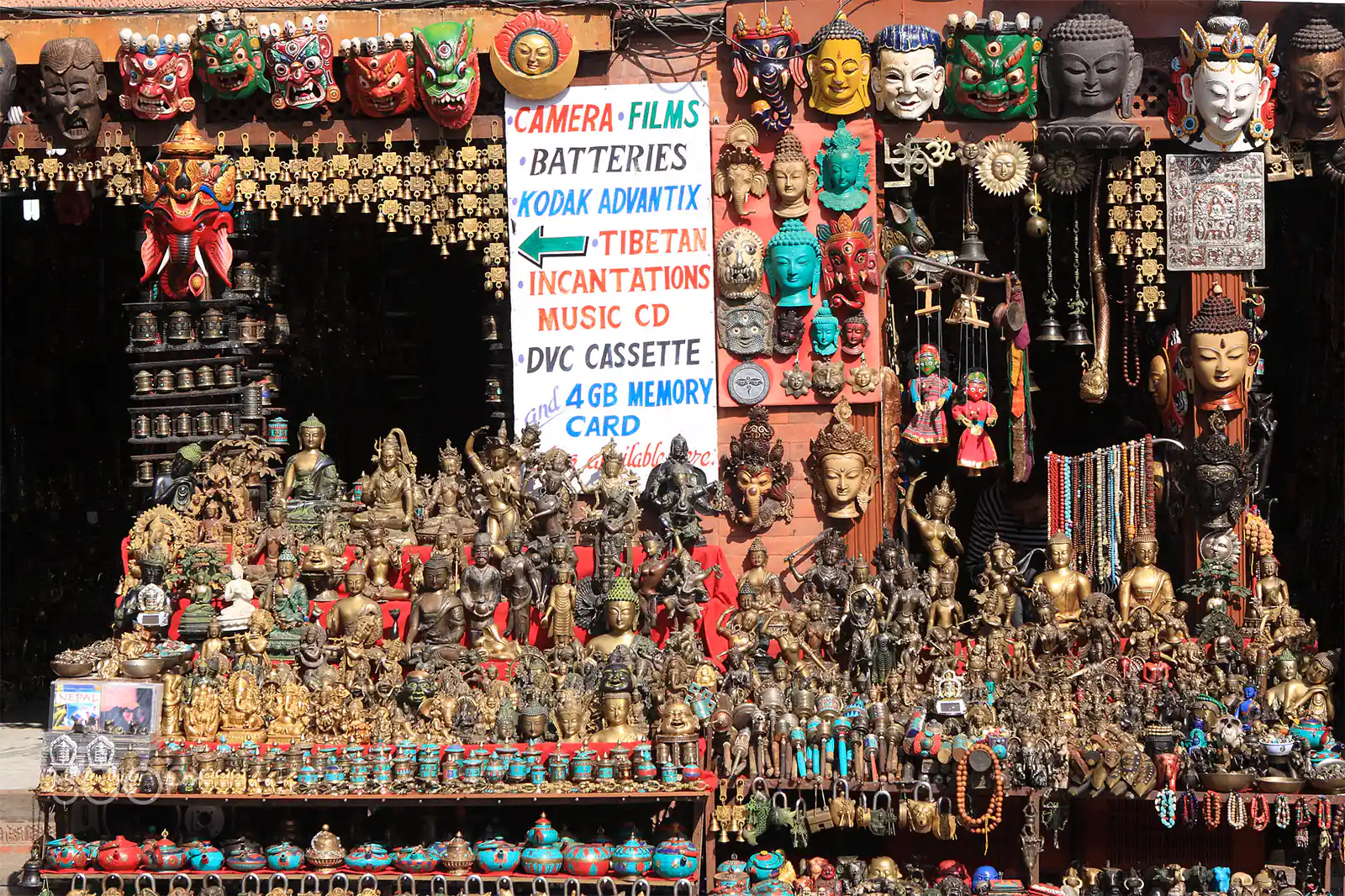
This city is also famous for its potters. For many city dwellers, this is a hereditary occupation. Pots, jugs, figurines of animals, cups, bowls – a massive selection of this popular product in Nepal can be the best souvenir for you from Bhaktapur.
Sightseeing at Bhaktapur Durbar Square
Among the numerous attractions in Bhaktapur Durbar Square, we have listed a few historical, cultural, and legendary sites that are worthy of your visit once in a lifetime.
Golden Gate
The Golden Gate is a must-see part of the Royal Palace on Durbar Square. Also known as Sundhoka, the Golden Gate was built in 1753 by King Ranajit Malla. The gate frame is of immense archaeological, historical, and religious importance. Its intricate art has made it the greatest masterpiece of Nepalese art ever created.
A permanent army guard at the Golden Gate is guarding the entrance to the Royal Palace courtyard. The gate provides access to the courtyard where the Taleju Temple and Naga Pokhari are located.
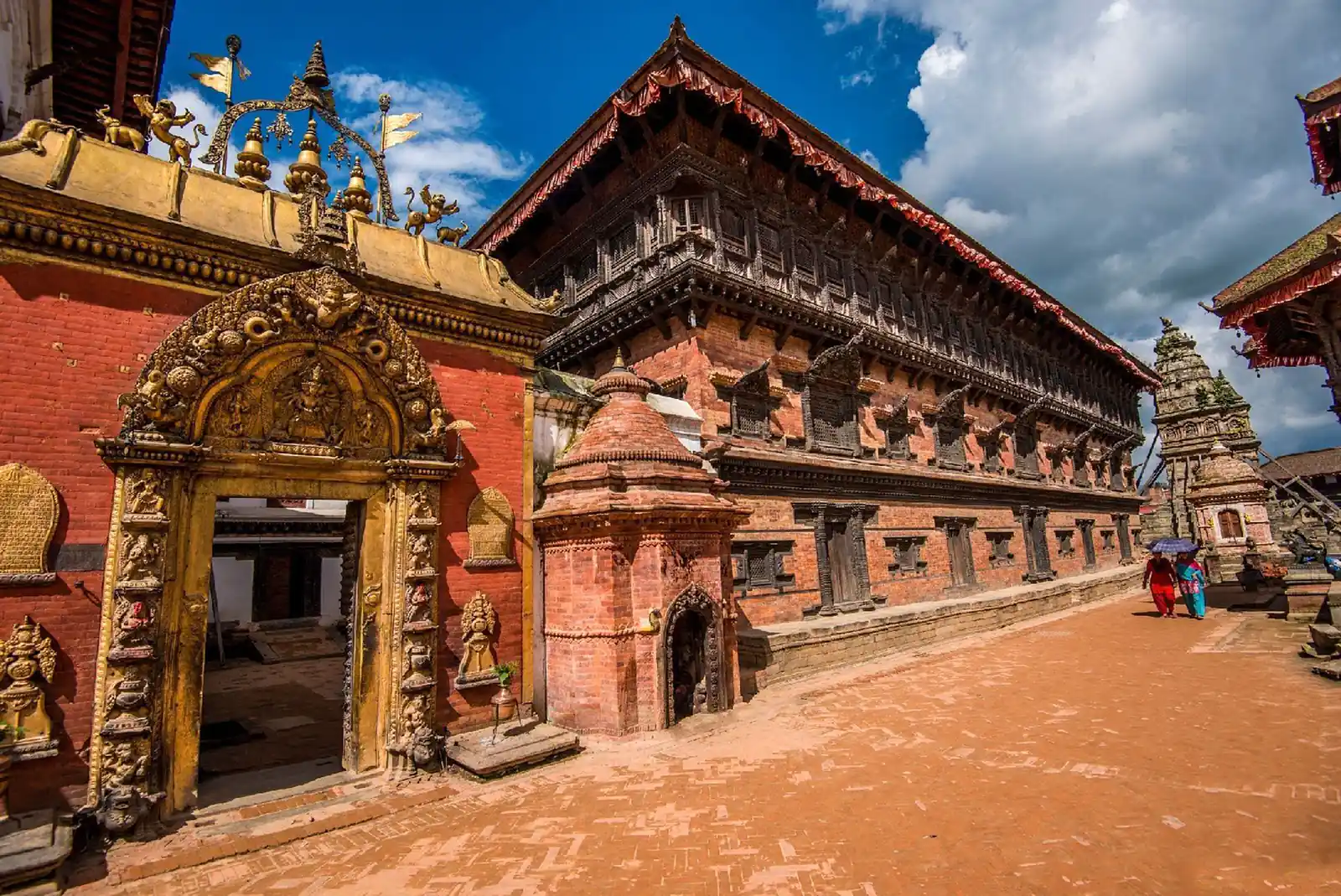
Palace of 55 Windows
This palace is east of the Golden Gate, an architectural masterpiece with 55 intricately carved wooden windows spanning the top floor. This building is also believed to be made from one tree. The palace was founded during the reign of Yaksha Malla. King Bhupatindra Malla subsequently rebuilt the palace.
The majestic building was severely damaged during the earthquake in 1934 but has been restored several times in the years since. Once home to the Malla kings, today it is home to art objects from the National Art Gallery.
The entrance to the gallery is guarded by the figures of Hanuman – the god of monkeys and Narasingha (the incarnation of the god Vishnu in the form of a lion-man, especially revered by adherents of Vaishnavism). The gallery presents an excellent collection of Hindu and Buddhist art paintings, manuscripts on palm leaves, thangkas, and metal, stone, and wood products.
A tiny temple of Shiva Parvati stands at 70 m from the western entrance to Durbar Square, famous for carvings depicting erotic scenes.
Dattatreya Temple
Dattatreya Temple is considered the main attraction of this square. Like other significant temples of the Kathmandu valley, it is believed that it was made from the trunk of a single tree by King Yaksha Malla in 1427. Having survived many disasters, Dattatreya temple, as before, confirms the great successes of the Malla dynasty in the history of Nepal.
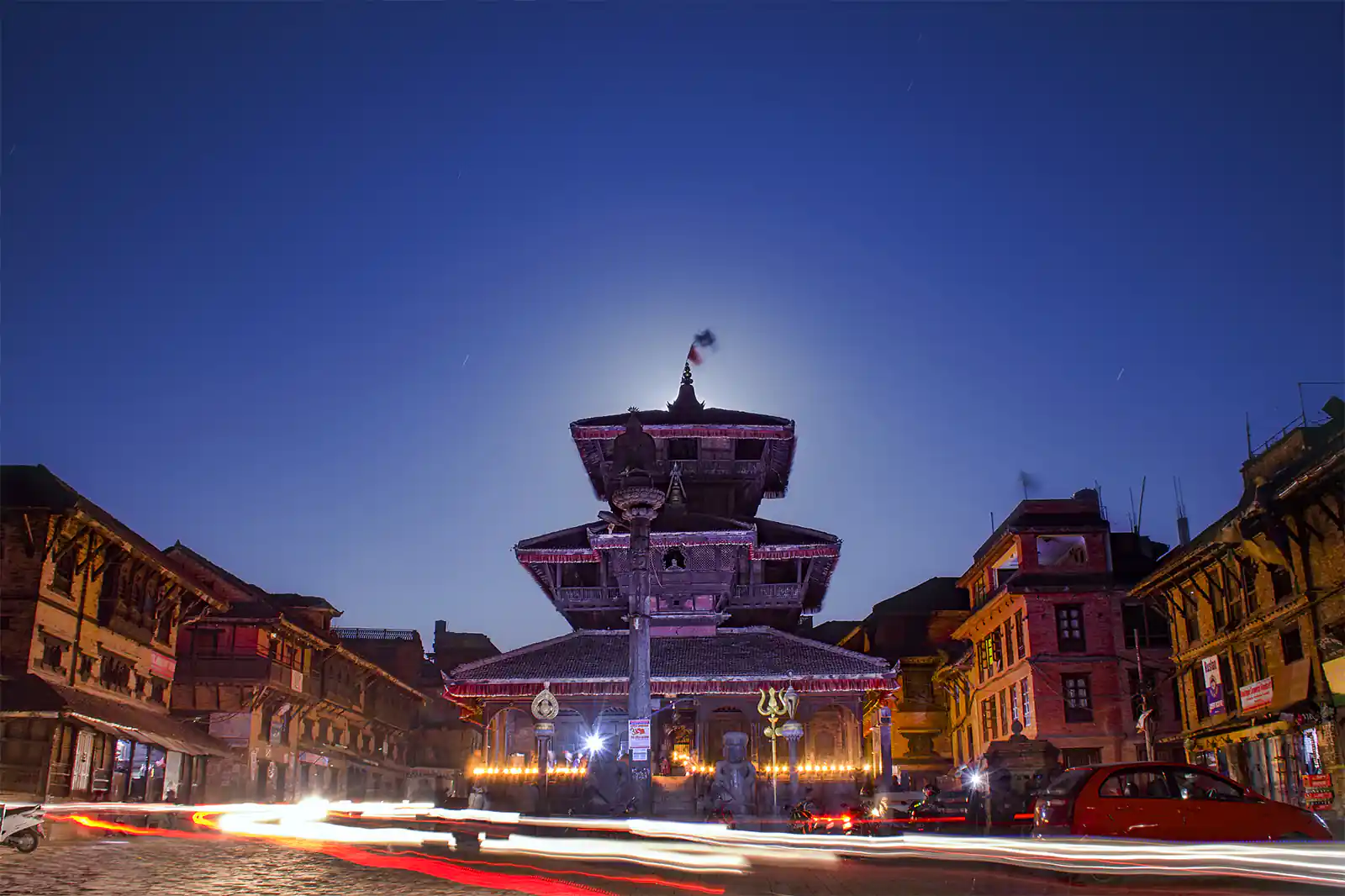
The temple is allocated to Dattatreya, a curious hybrid deity (The god is then depicted as an animal or as an unrecognizable human form combined with that of an animal), who combines elements of Brahma, Vishnu, and Shiva. The symbols of Vishnu are depicted on the pillars. The pot you can find in the temple symbolizes the god Brahma.
In later years, the building was renovated by King Vishwa Malla and opened as an inn for pilgrims. Since this last renovation, the building has functioned as a temple.
Taumadhi Square
On the outer edge of the Bhaktapur Durbar Square, you will find Taumadhi Square. Here, you can visit the beautiful Nyatapola Temple. From this temple, you have a beautiful view of the square. The temple has five floors and towers 30 meters above Taumadhi Square. The five levels of the most famous pagoda of Nepal correspond to the five essential elements of nature – water, earth, fire, wind, and sky.
This temple is the highest in Nepal. Visiting this temple at sunset is best if you want the best view. King Bhupatindra Malla founded this perfectly proportioned temple, and its construction was so sturdy that the earthquakes of 1934 and 2015 caused only minor damage.
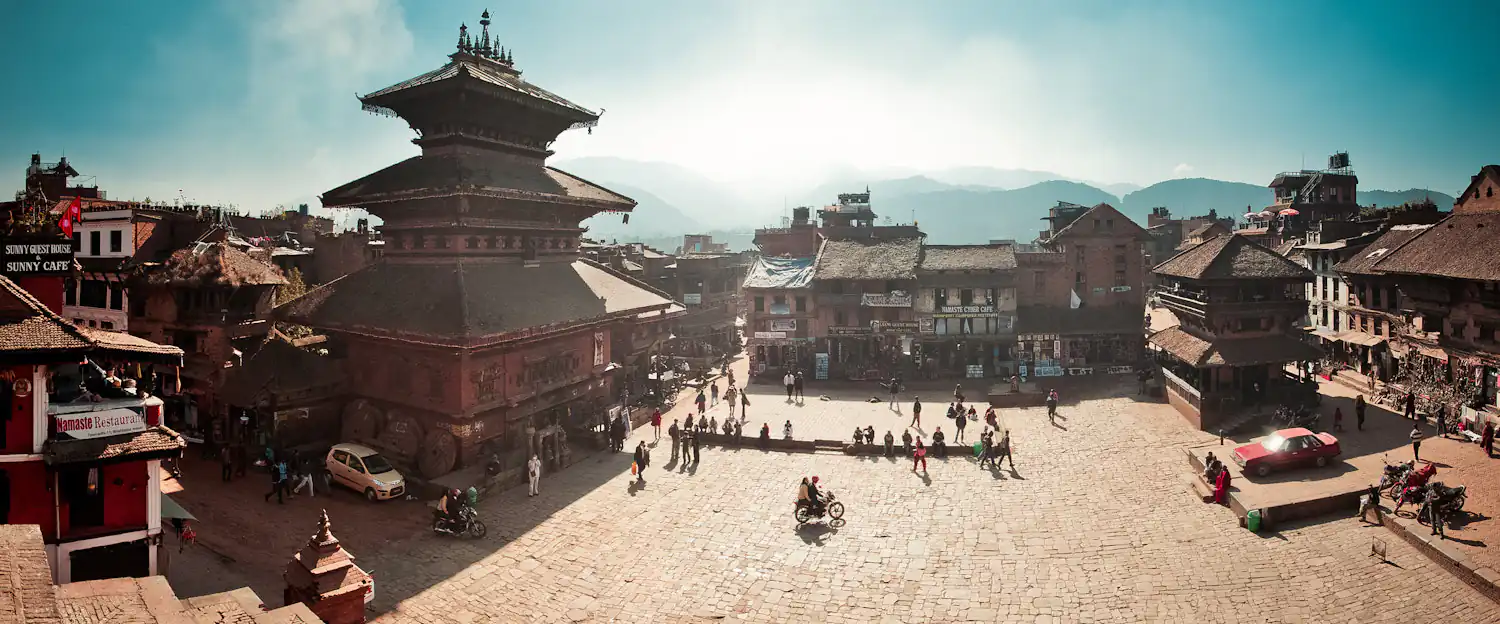
The Bhairavnath temple is also located on this square. This broad-fronted, three-roofed temple is dedicated to Bhairav, the fearsome incarnation of Shiva, whose consort occupies the Nyatapola Temple across the square. Despite the terrifying powers of Bhairav and his massive temple, the deity is depicted here as a disembodied body measuring only six inches in height.
The Bisket Jatra Festival is celebrated here every year in mid-April. Piled casually against the north wall of the temple are huge wheels and runners of the chariot that drag the image of Bhairav around the city during this festival.
Pottery Square
In addition to architecture and woodcarving, ceramics is one of the city’s main tourist attractions. The Pottery Square is dotted with hundreds of earthenware bowls and jugs. Around the square sit men, whose tools are their hands and a wheel, which is set in motion by the most straightforward device. Most of the area is occupied by products arranged to dry in the sun in even rows. And you can see how clay products are fired in open kilns until the final product is ready.
There is a Ganesha Temple on the square, for which wealthy potters donated money for construction in 1646. Currently, the temple priest is elected only from the caste of potters. In October, after the harvest, the potters exchange their products for rice drying in the square.
Tachupal tole and peacock window
A series of ornate brick flank Tachupal Tole and wooden buildings used initially as Math (Hindu priests’ houses). The most famous is the Pujari Math, now a wood carving museum.
The building was severely damaged in the 2015 earthquake. Still, its most prominent feature is the beautiful 15th-century Peacock Window. Until the end of the 16th century, Tachupal Tole was the original central square of Bhaktapur and the official seat of the royal family of Bhaktapur.
Vatsala Durga temple and Taleju Bell
Vatsala temple is right before the Royal palace and next to King Bhupatindra Malla’s column. It is a stone temple constructed in 1672 in the Indian Shikhara style by King Jagat Prakash Malla. This temple, built in the Shikhara style, resembles the Krishna Mandir in Patan.
It was utterly destroyed during the earthquake of 2015. Now, all that remains is a large bell erected in 1737 by King Jaya Ranajit Malla to mark the morning and evening prayers at Taleju Temple.
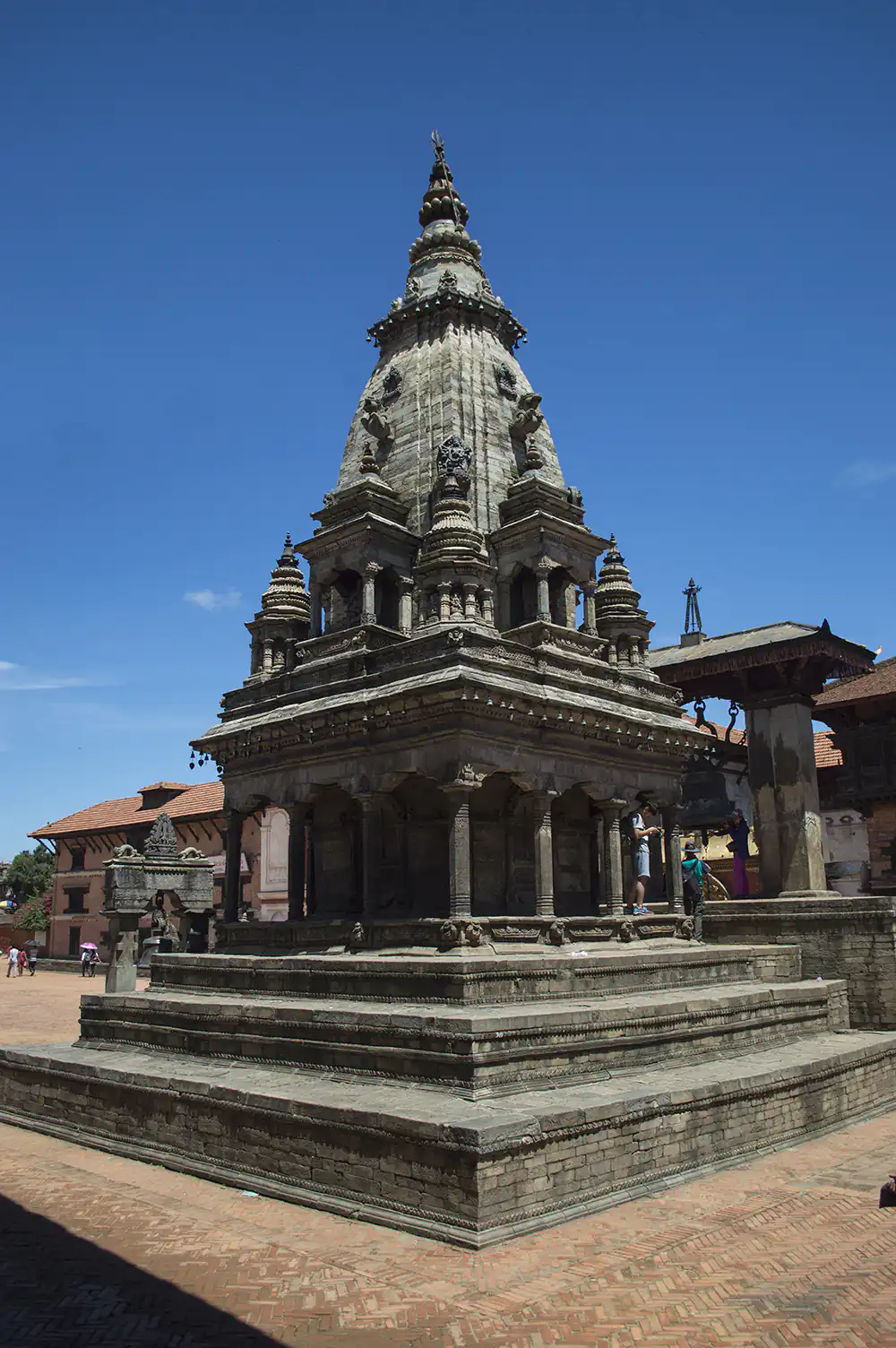
Chyasilin Mandap
Next to the temple of Vatsala Durga is an eye-catching water reservoir, then the Chyasilin Mandap rises. This octagonal temple used to be the most beautiful building on the Bhaktapur Durbar Square before the earthquake of 1934. The temple was rebuilt in 1990 with the same appearance using its original components.
Char Dham
There are four temples in the western part of Durbar Square. The first is the Rameshwar temple, dedicated to Shiva, and the Badrinath temple, where Narayana (Vishnu) is worshipped. In front of them is a large temple of Krishna (Jagannath). Away from them stands the Shiva Temple, built in the Shikhara style in 1674 by King Jitamitra Malla. The four temples are called Char Dham, like the four Himalayan shrines.
Column of King Bhupatindra Malla
King Bhupatindra Malla was the most prominent of the Malla kings ruling in Bhaktapur. He had a significant influence on the city’s art and architecture development. Opposite Taleju Chowk stands a column with a kneeling king sitting on its top, turning his gaze to the magnificent gates of his palace. King Bhupatindra Malla installed the column in 1699; there are other columns in Patan and Kathmandu, but it is the most beautiful.
Yaksheshwar Mahadev Temple
The Pashupatinath Temple, or Yaksheshwar Mahadev Temple, is dedicated to Shiva and replicates the Pashupatinath Temple in Kathmandu. According to legend, Shiva appeared in a dream to King Yaksha Malla, after whom the temple is named, and ordered to build a copy of the Pashupatinath temple next to the palace. Built by King Yaksha Malla in 1475, the temple is the oldest on the square. An earthquake in 1934 partially destroyed the building. Later, the building was restored, having received a second birth.
Accommodations near Bhaktapur Durbar Square
The city has several dozen hotels and guest houses, modest, tidy, and entirely on budget. Many of them are located in the center, next to Durbar Square. It is worth staying here at least for the night – to watch the great awakening of the city in the morning. Here are some of the best accommodation offers near Bhaktapur Durbar Square:
Shiva Guest House
This hotel is within proximity of Bhaktapur Durbar Square and Pottery Square. The guest house has 18 rooms with a cozy bed, balcony, and windows for the perfect city view. They offer free wireless internet service throughout the hotel property. The tour and ticket assistance will assist you in booking your trip.
The hotel also provides kindergarten and spa services for fun and relaxation. The hotel also takes care of its guests by relieving them of all the hustle and bustle of luggage storage and check-out and offers transport to the airport at an additional cost.
Pagoda Guest House and Restaurant
Located in the center of Bhaktapur, the medieval city of Nepal, this guest house is in a small square close to the city’s main monument, Taumadhi Square. Pagoda Guest House has 19 spacious, comfortable rooms with multi-channel TV, 24-hour hot and cold water, and air conditioning.
It has free 24-hour room service, free Wi-Fi throughout the hotel, and a small restaurant where breakfasts and main Nepali, Newari, Continental, Chinese, and Indian meals are served. From the restaurant terrace, you can see the Nyatapola temple and the busy life in the square, and it is less than a minute’s walk from Bhaktapur Durbar Square.
If, when making the reservation, you ask to be picked up at the airport, they do so by charging a small amount.
Sunny Guest House
Sunny Guest House is in the fascinating city of Bhaktapur in front of Nyatpole Temple. Its rooms, all different, spacious, and with great beds, are decorated with great charm. Some have incredible views of Taumadhi Square, which should be considered when making your reservation.
The Sunny guest house has a restaurant with typical delicious dishes and a terrace with truly priceless views. The team staff is always ready to smooth over any problem. Concierge, tour desk, airport transfer, safe deposit, currency exchange, laundry, and ATM are some services they provide.
Kumari Guest House
Small hostel located just a few meters from Durbar Square, the heart of Bhaktapur. The room is spacious and clean, with comfortable beds and a small and standard bathroom. A great, hospitable team of staff manages the hotel. They serve all kinds of breakfast from Nepali, Newari to French.
This hotel’s terrace offers Bhaktapur’s overall view with magnificent views of the mountains of the Himalayas. It is undoubtedly recommended since its location is perfect, it is staff friendly, the room is good, and the price is affordable.
Hotel Bhaktapur Inn
Hotel Bhaktapur Inn is located within walking distance of Bhaktapur Durbar Square. The hotel offers a restaurant, Bar/Lounge, Room Service, complimentary toiletries, meeting facilities, and Laundry/dry cleaning services.
You can connect with your loved ones via free Wi-Fi throughout the hotel [property. An additional fee will provide you with an airport shuttle service.
